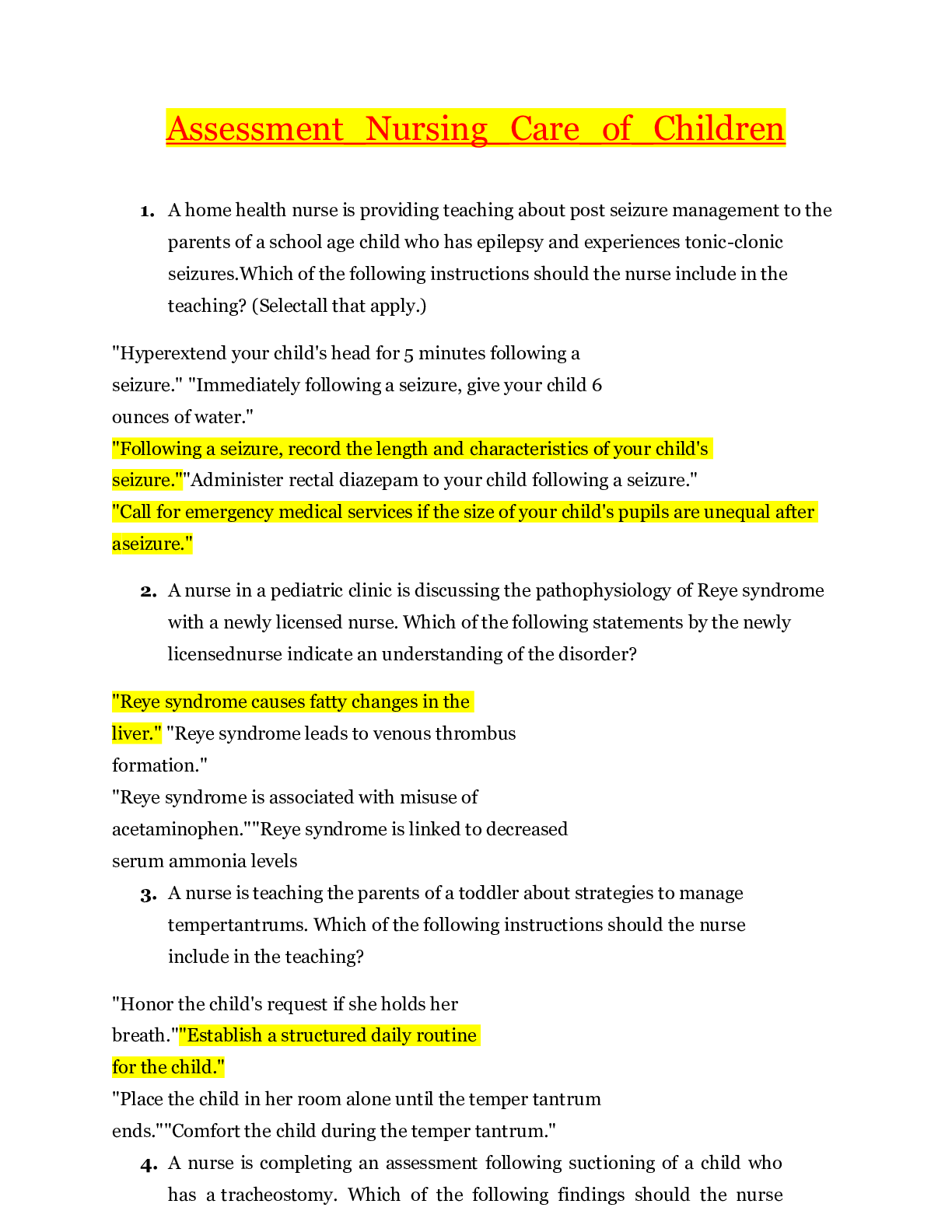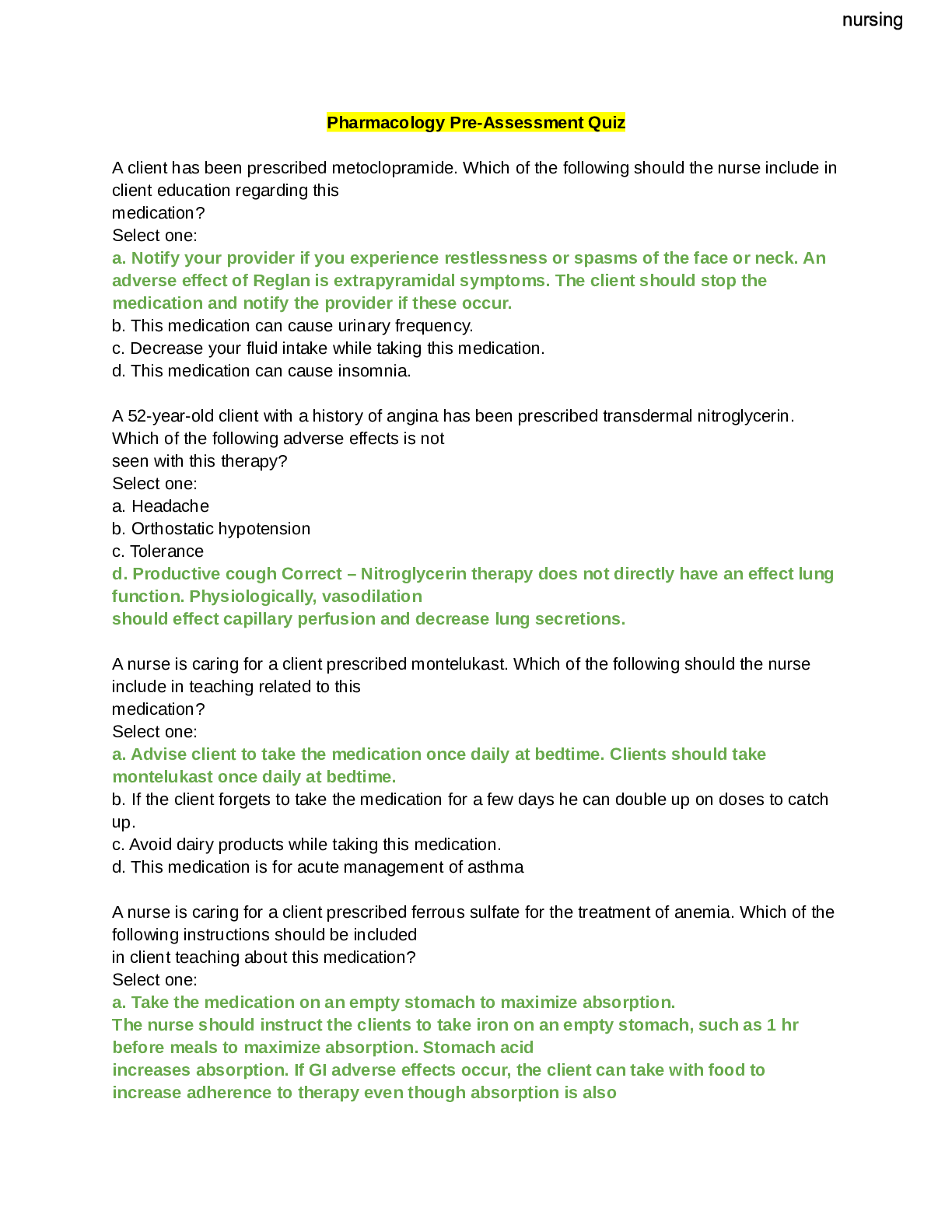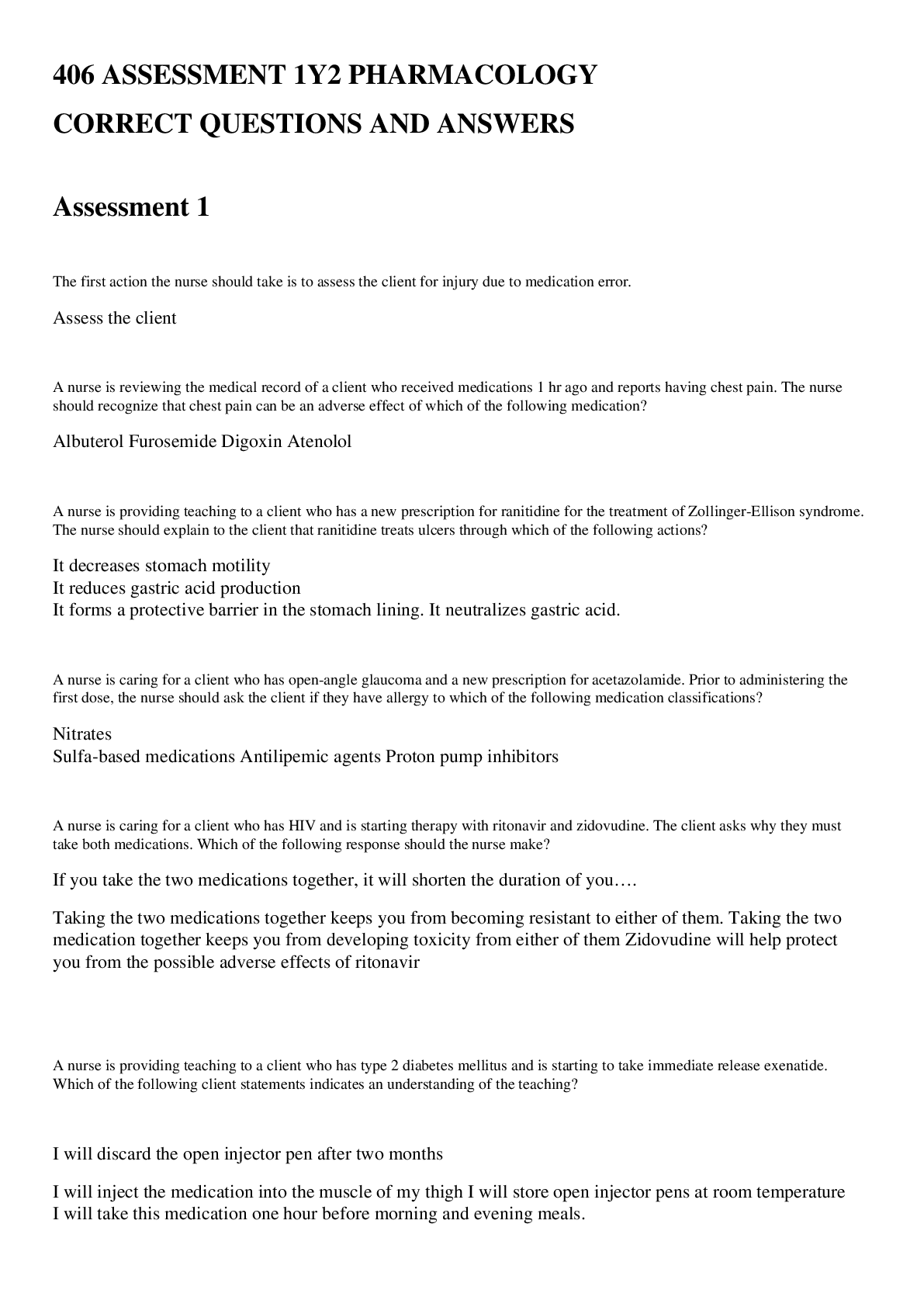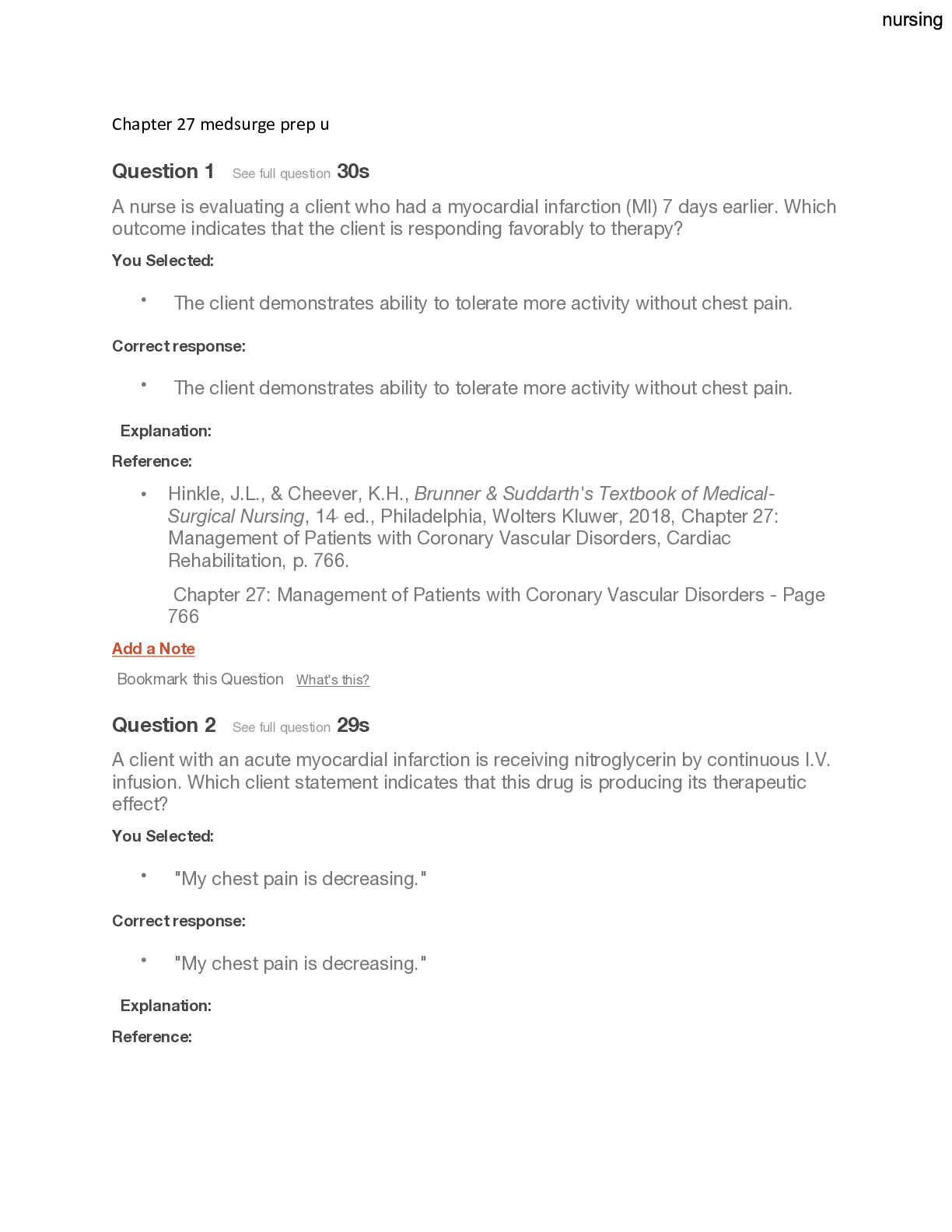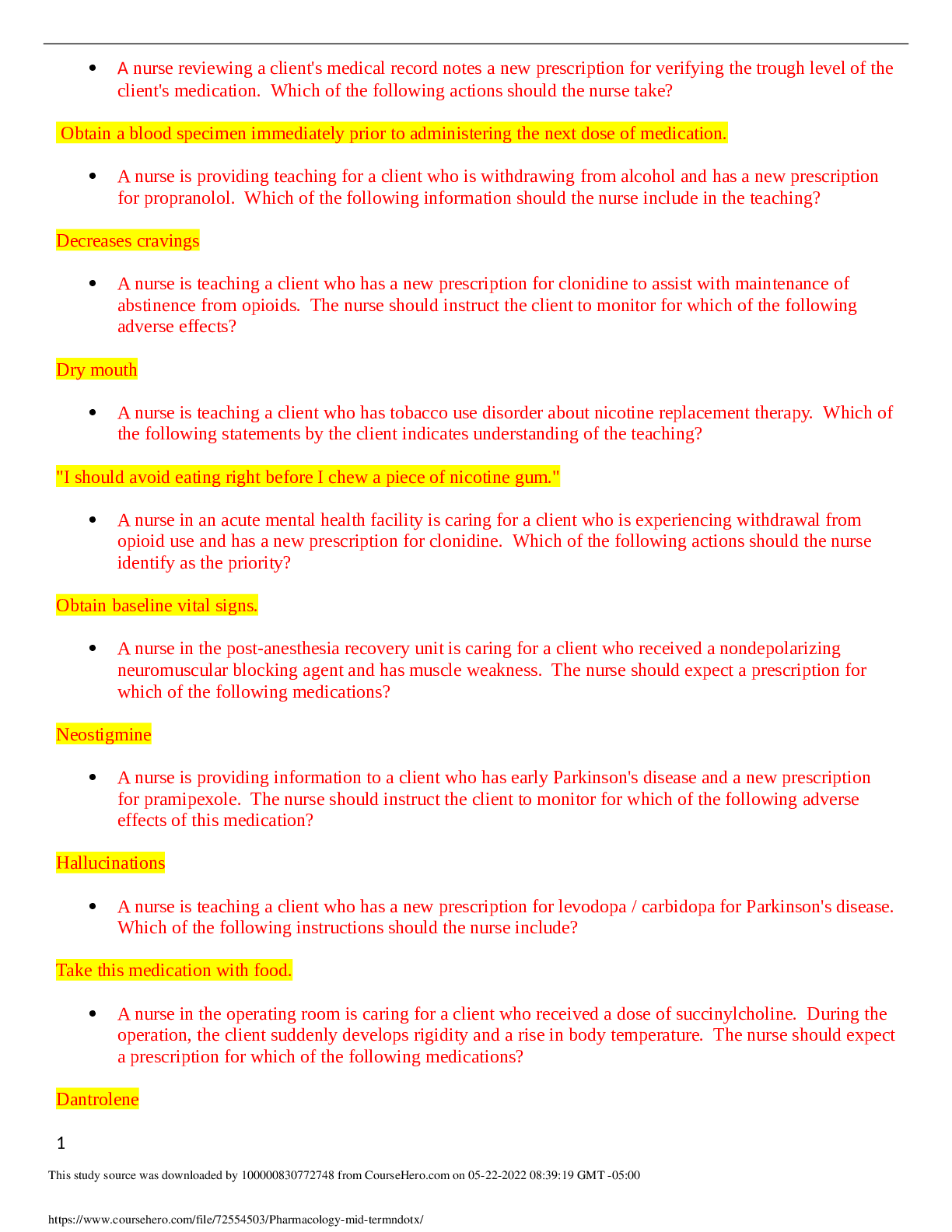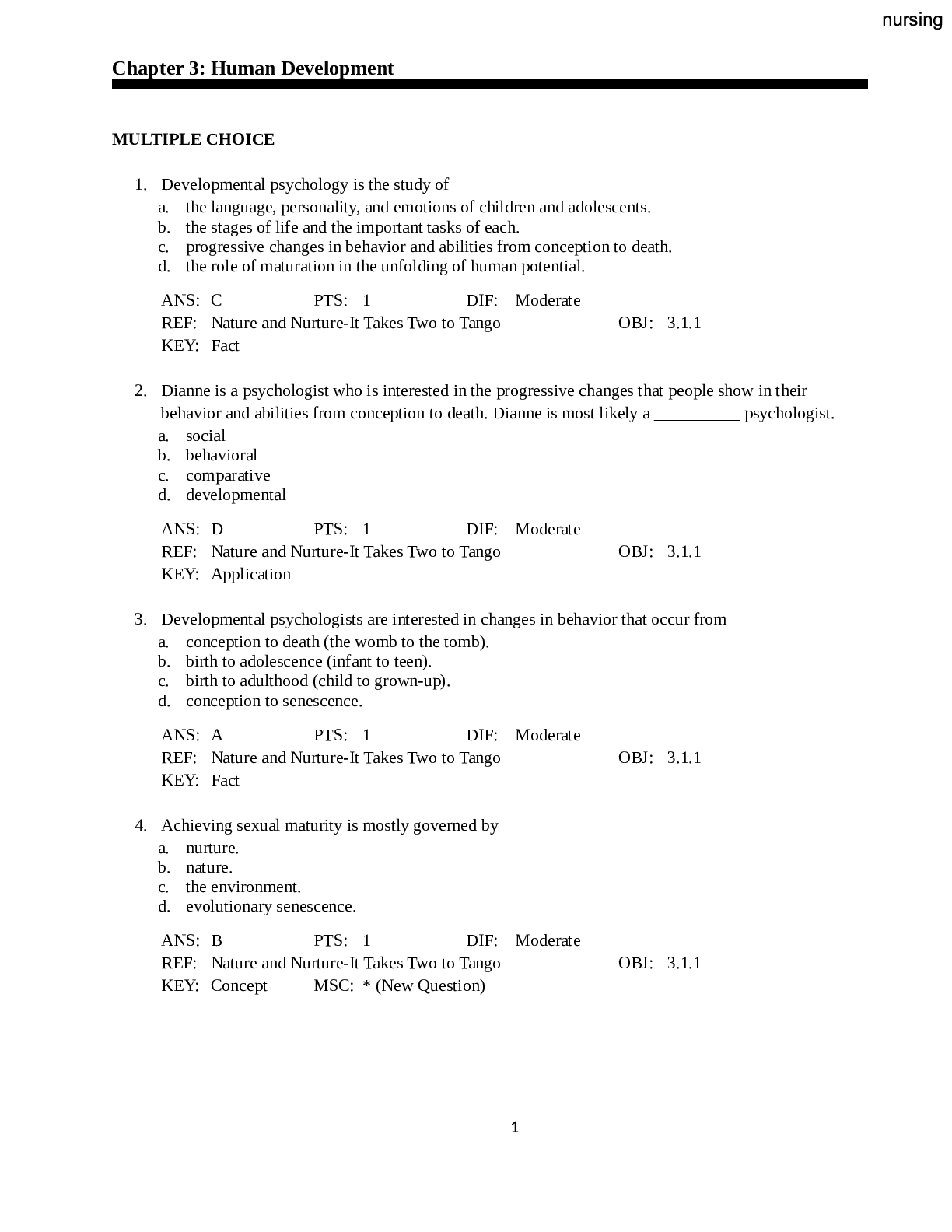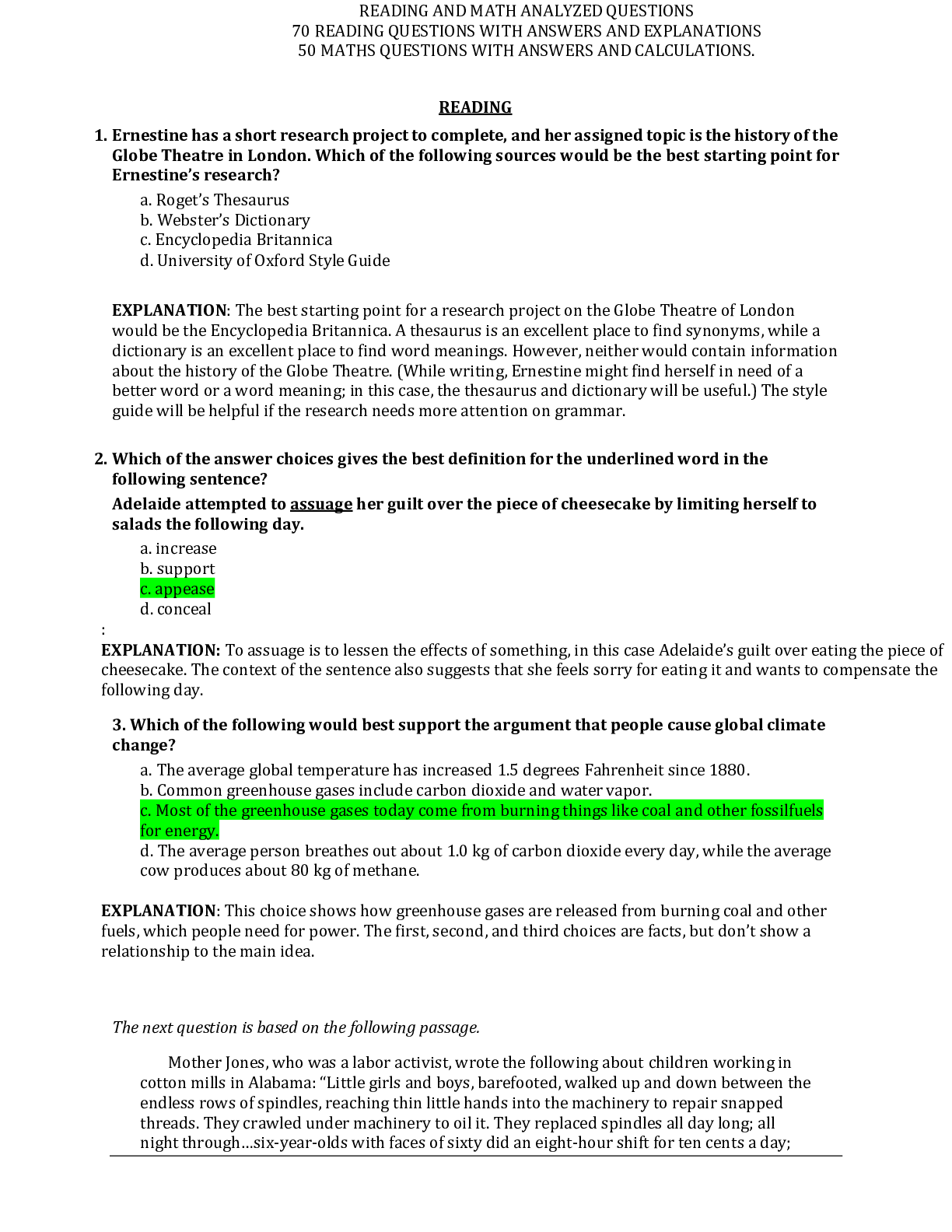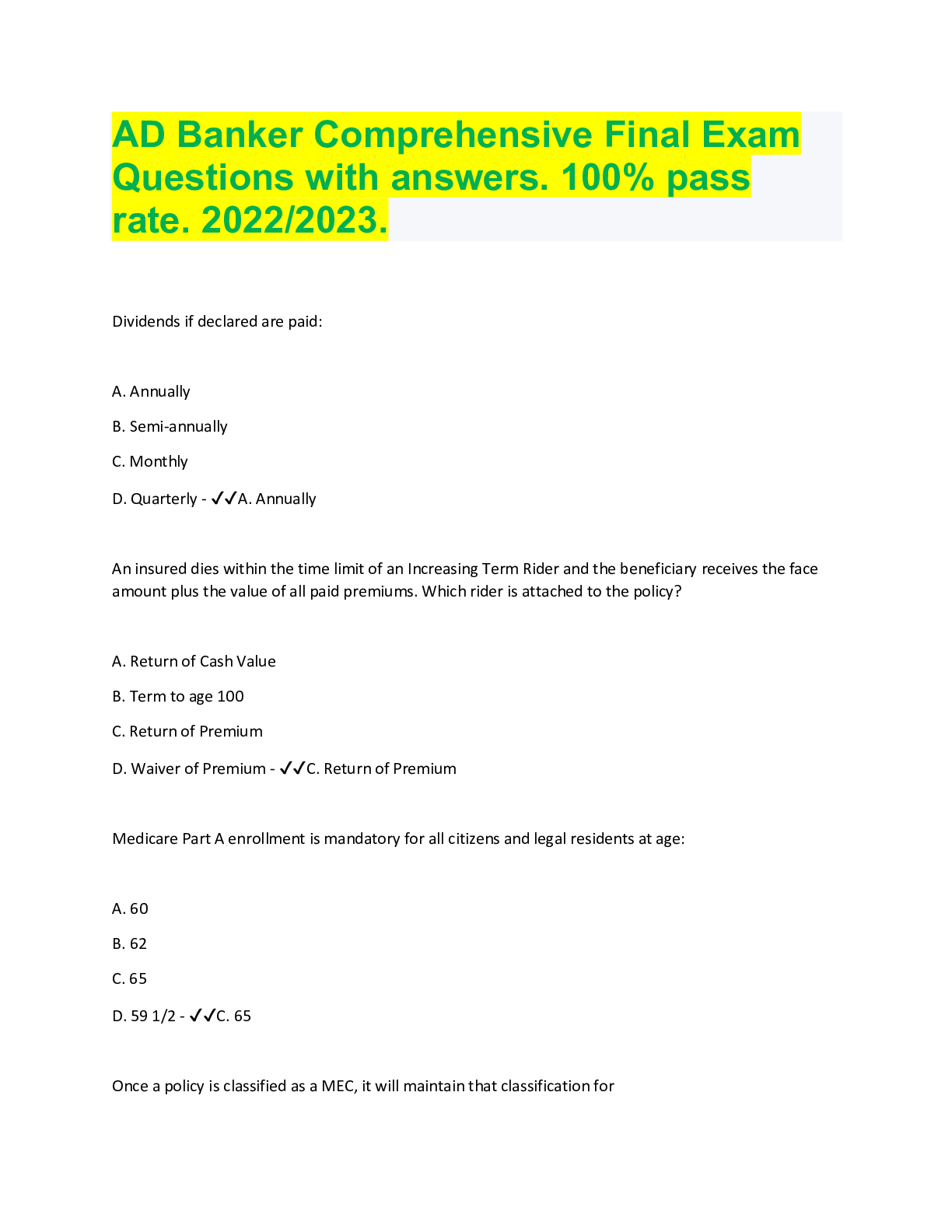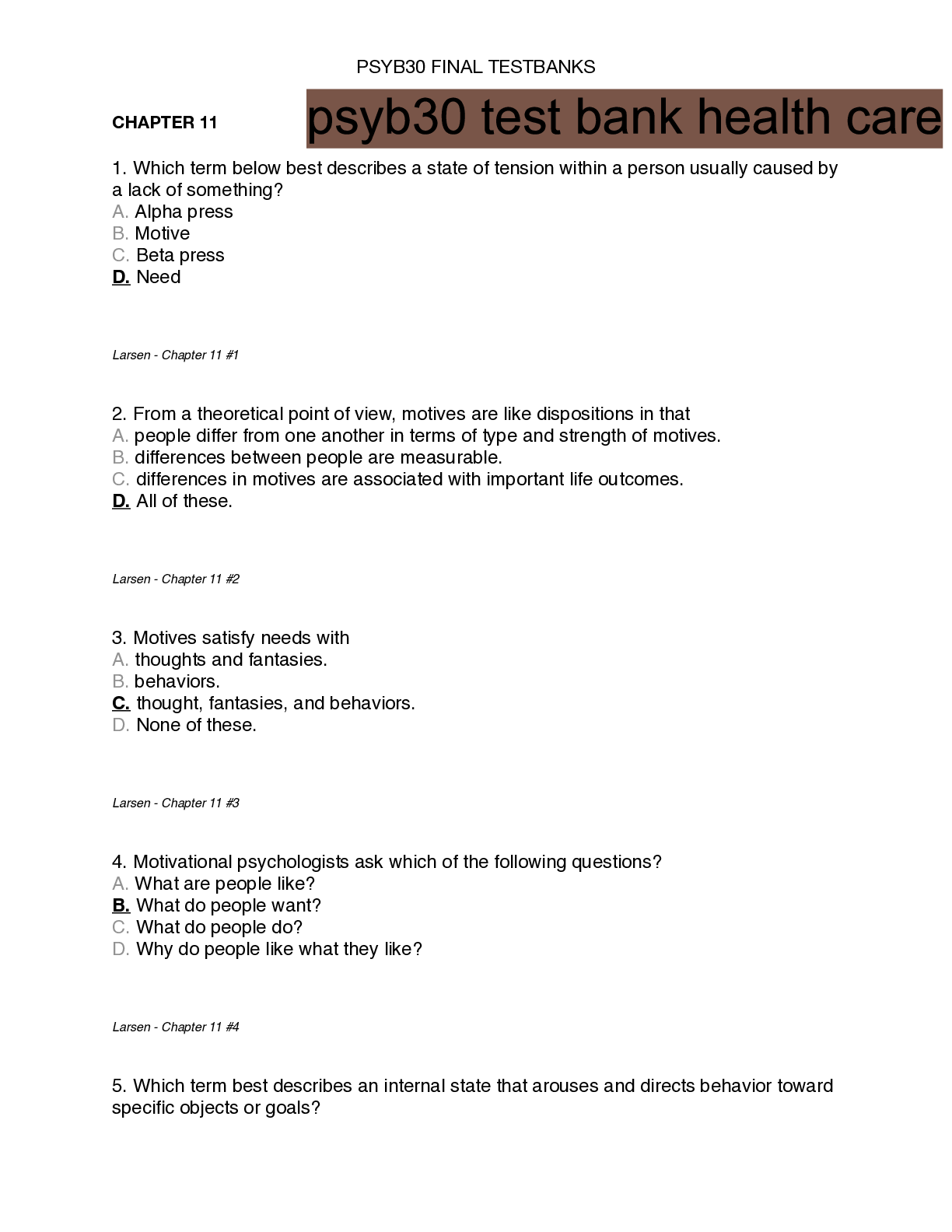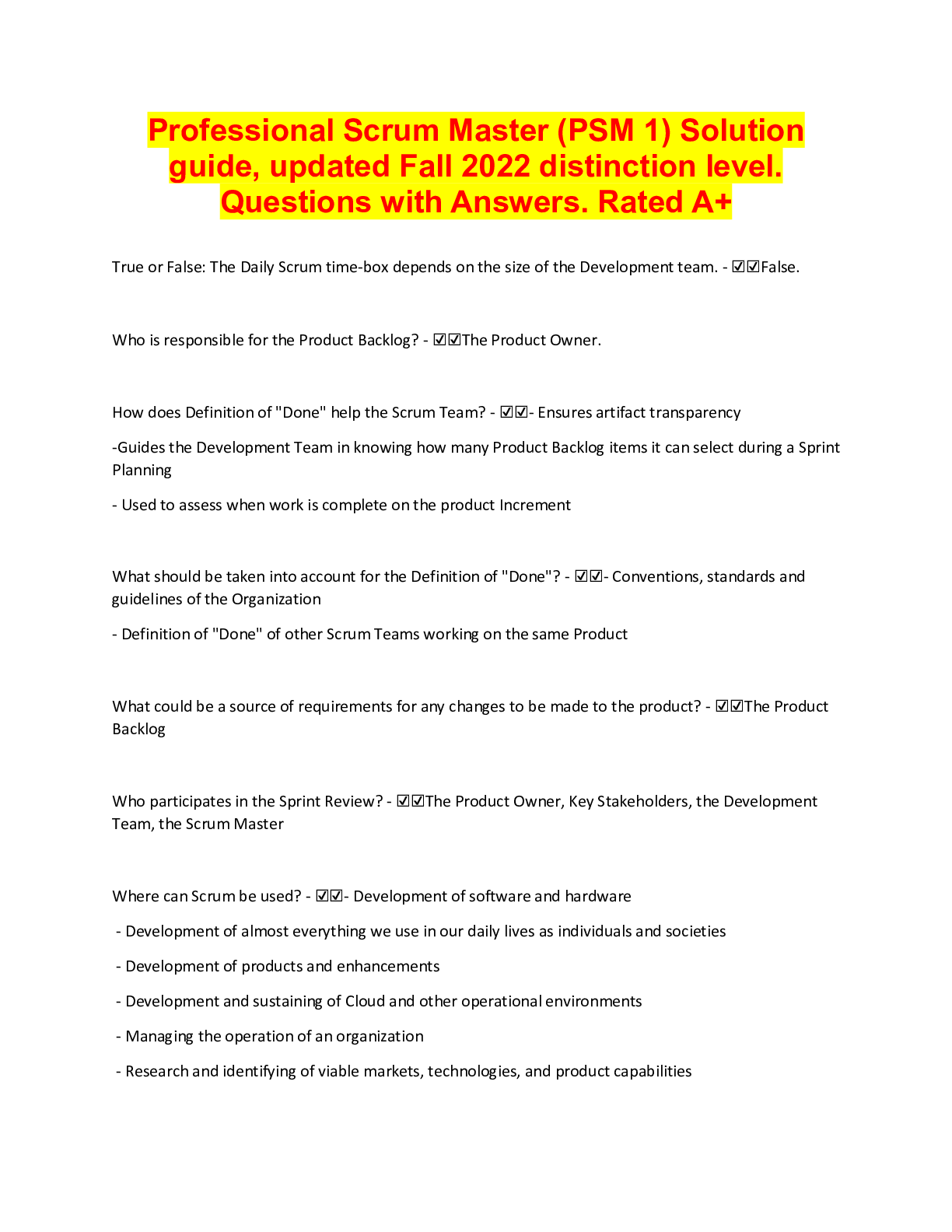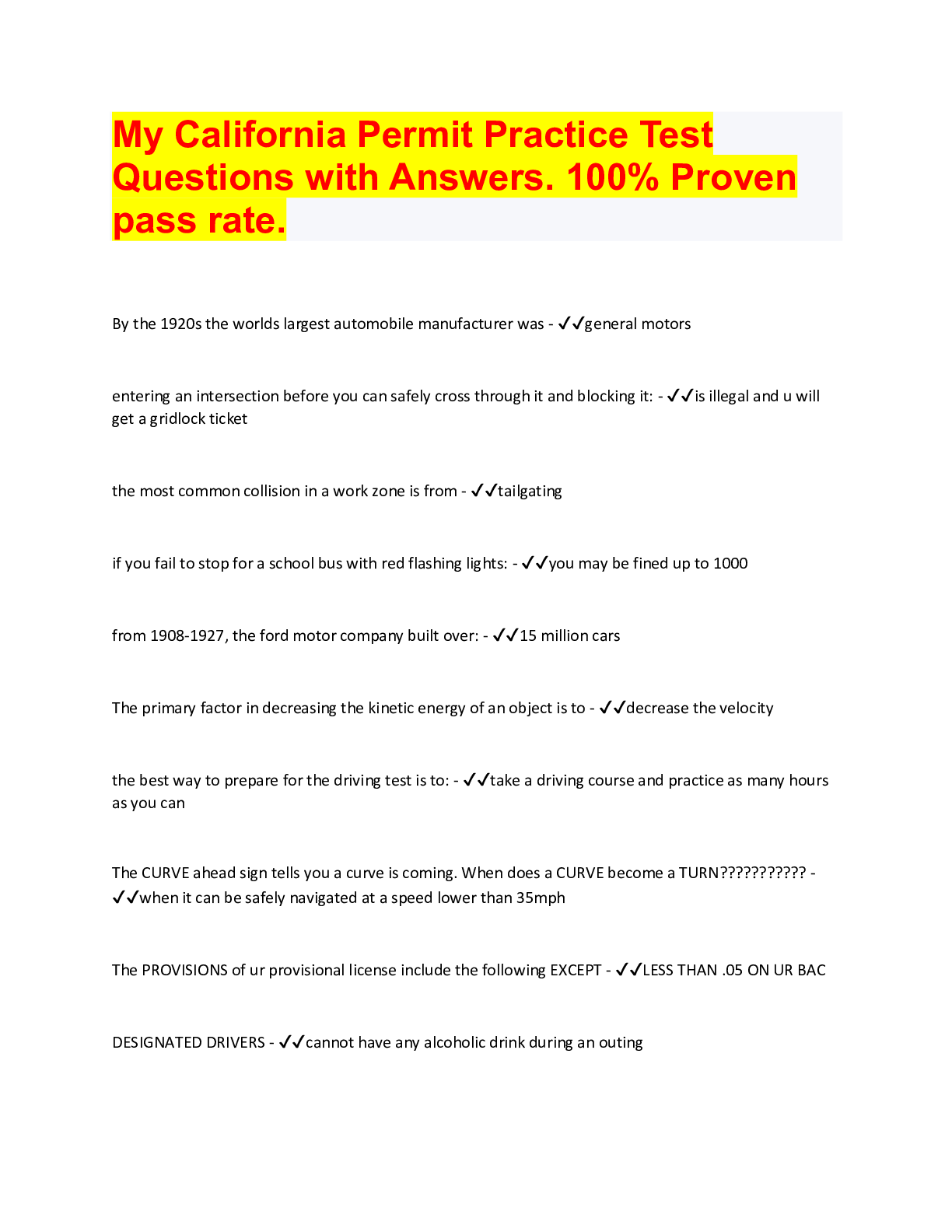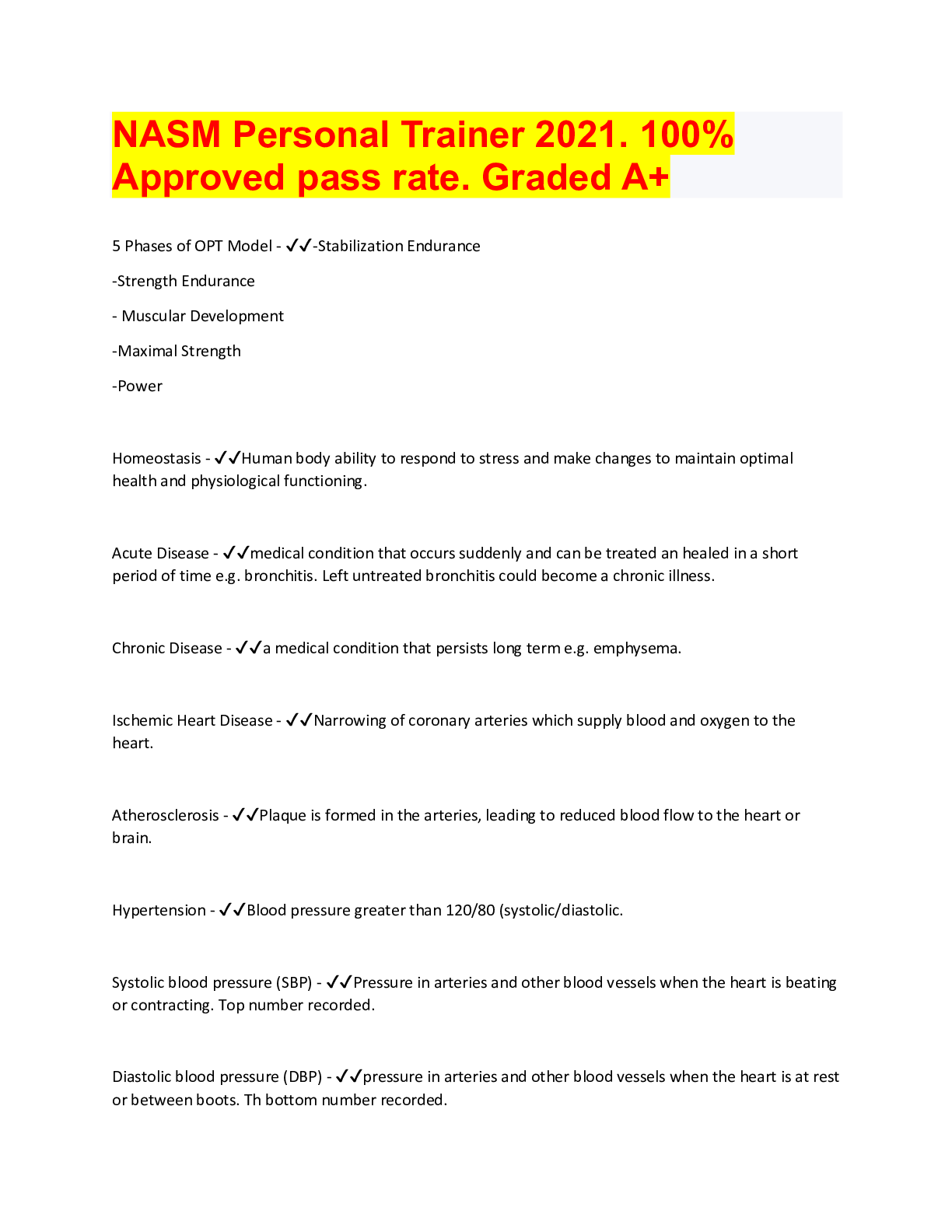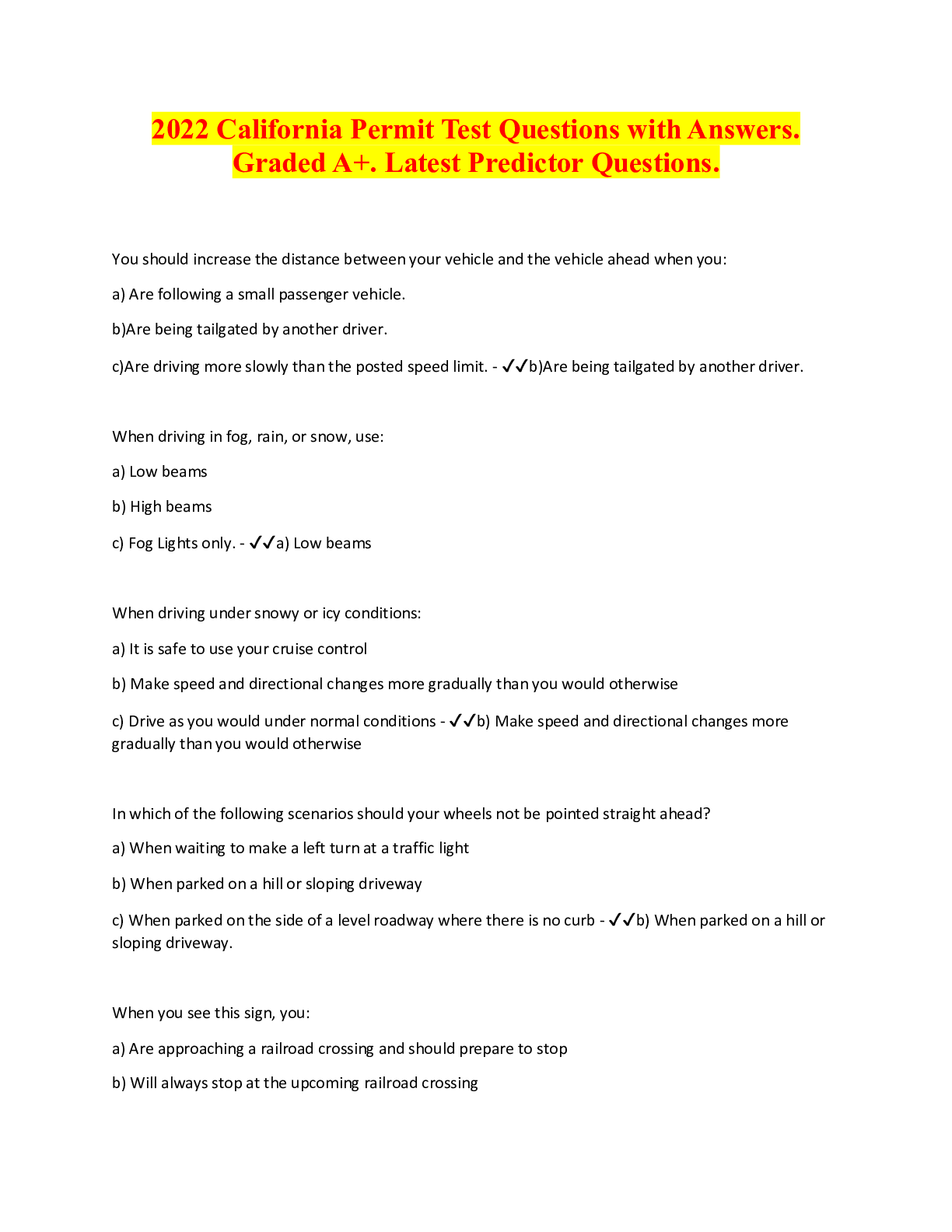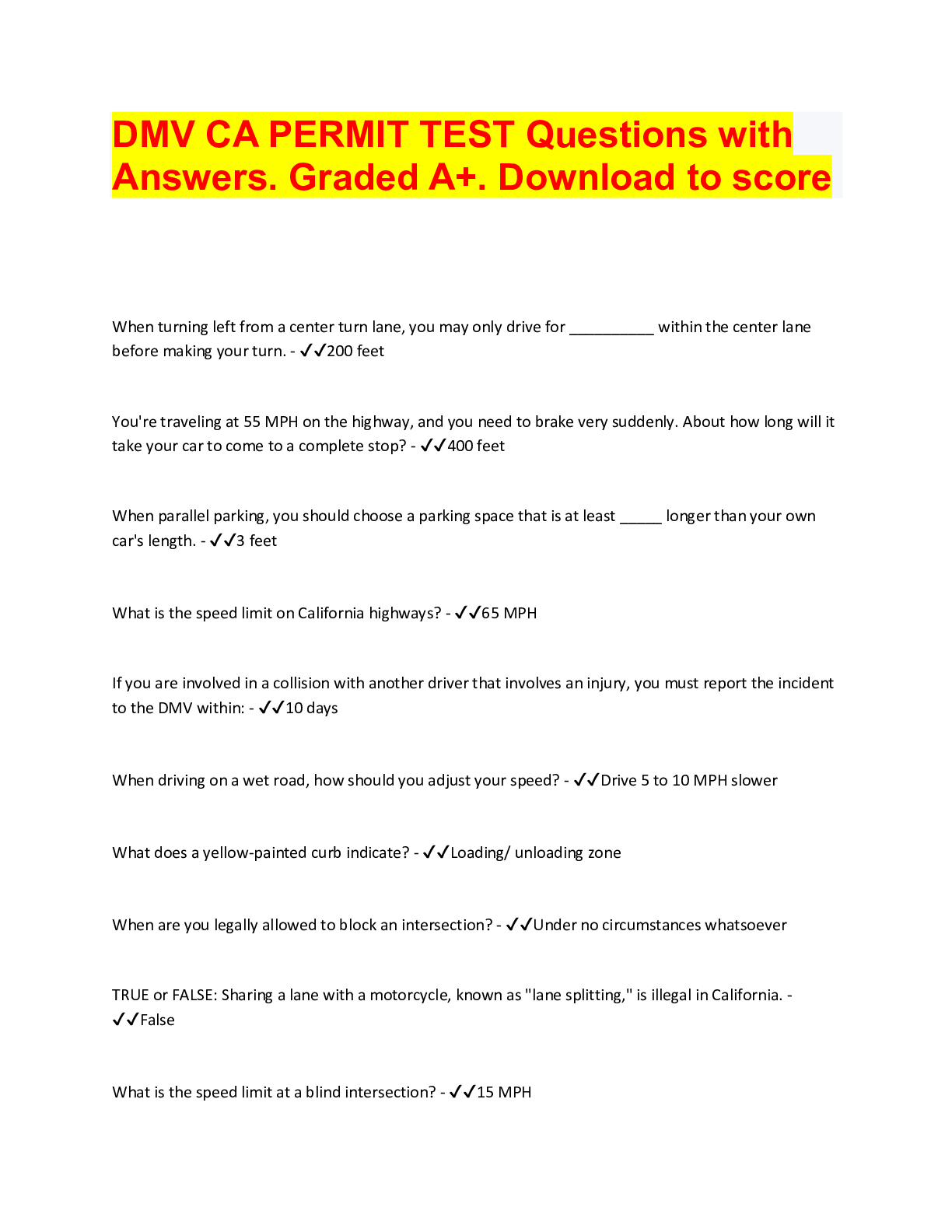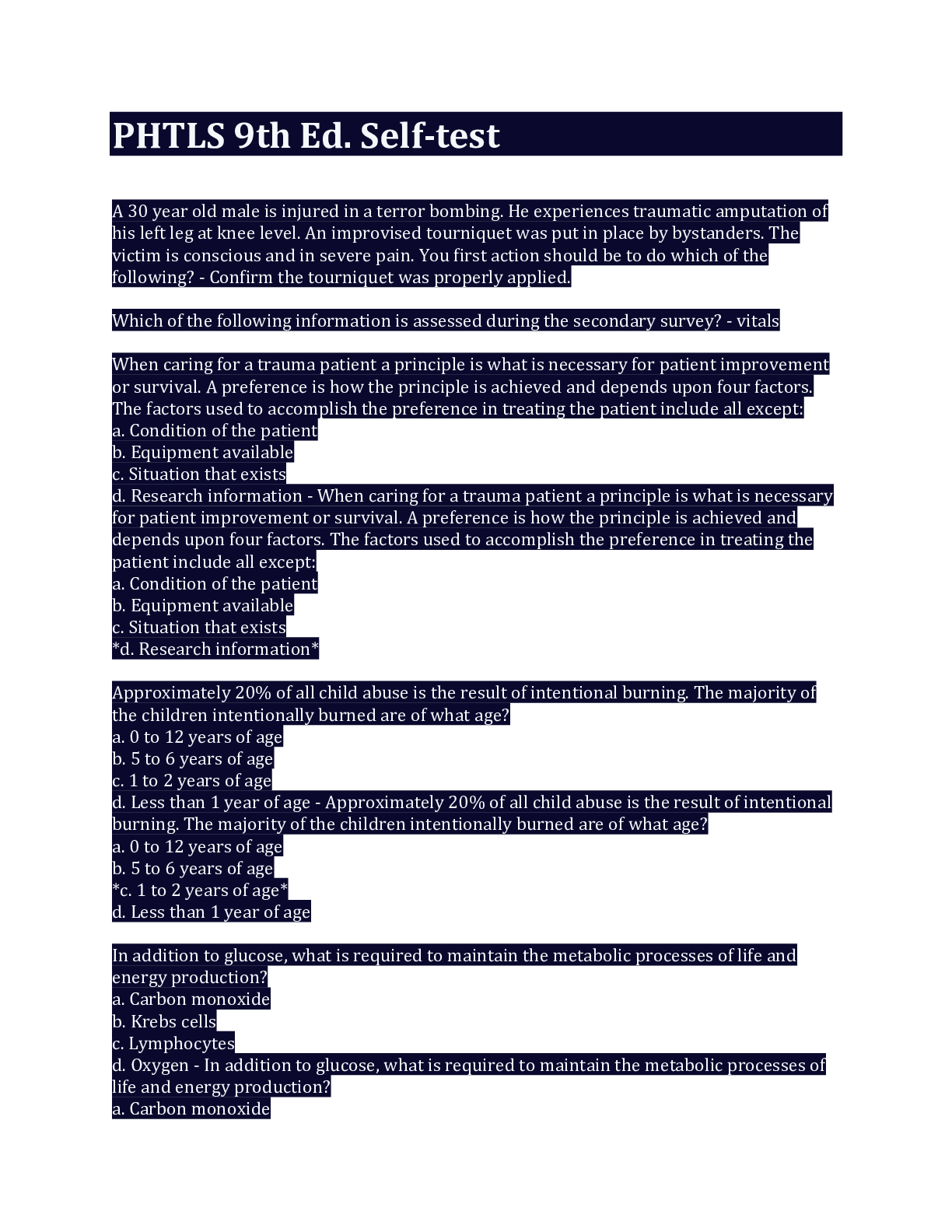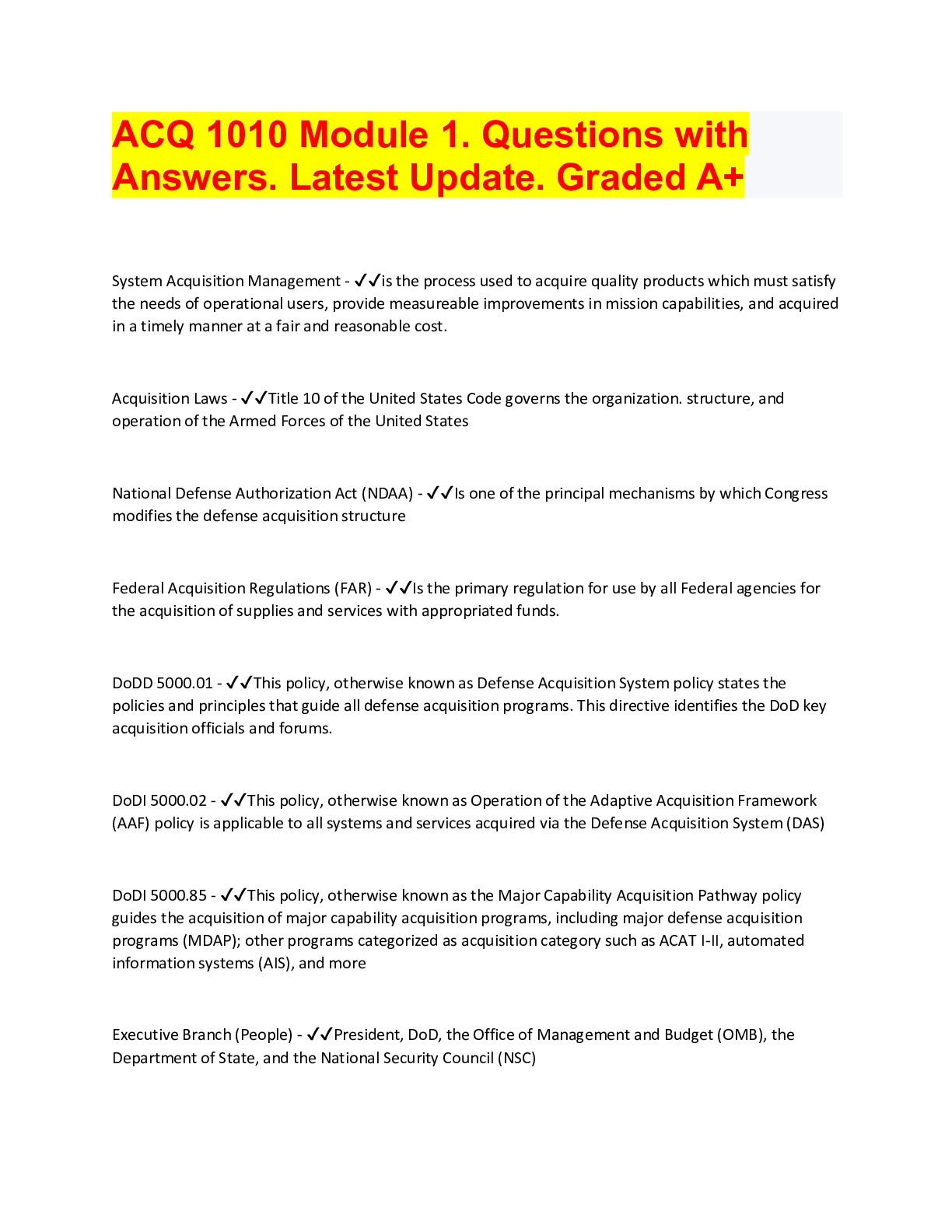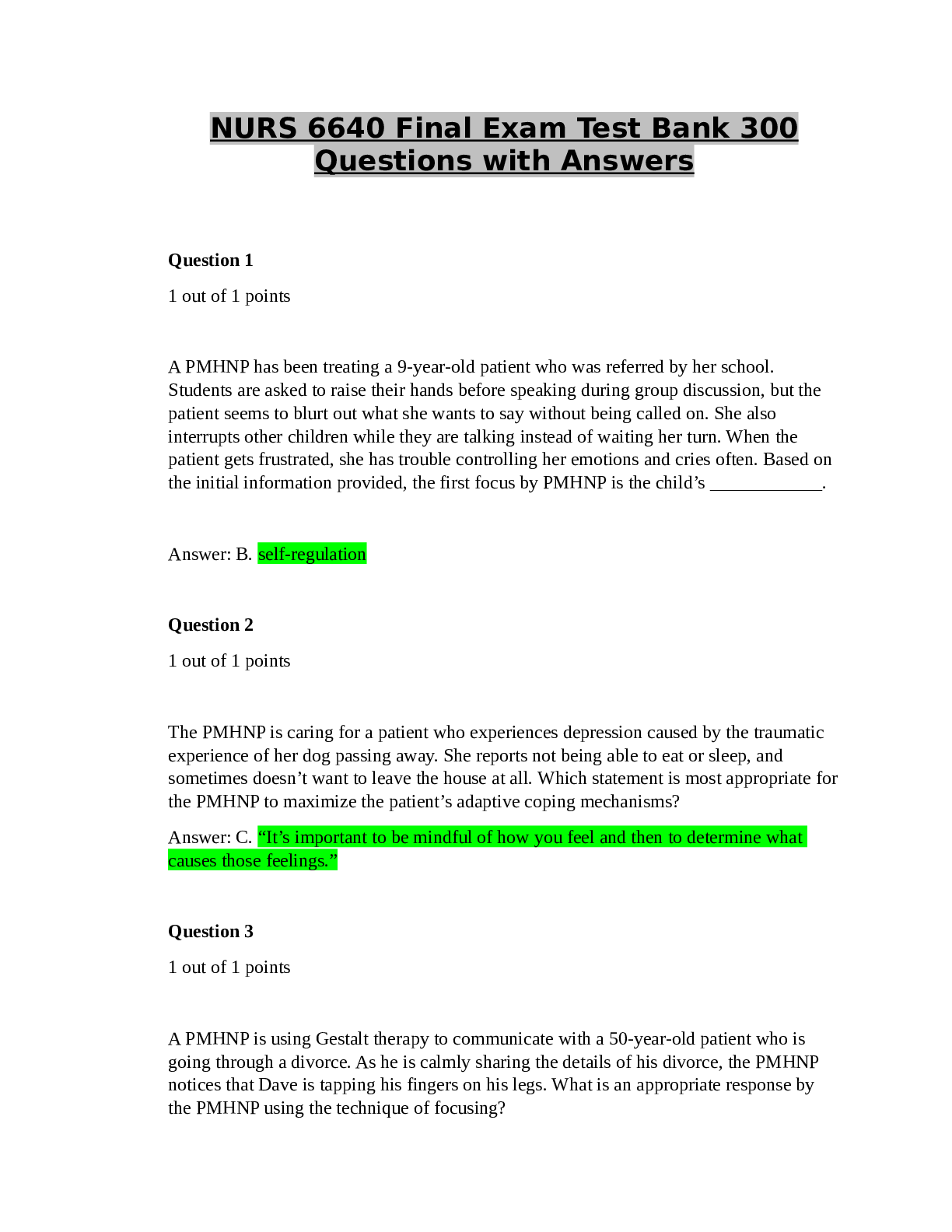*NURSING > QUESTIONS & ANSWERS > NUTRITION CHAPT 5 6 11 & 12 PRACTICE QUESTIONS WITH ANSWERS (All)
NUTRITION CHAPT 5 6 11 & 12 PRACTICE QUESTIONS WITH ANSWERS
Document Content and Description Below
lipids ANSWERS:---a diverse group of organic substances that are insoluble in water; lipids include triglycerides, phospholipids, and sterols triglyceride ANSWERS:---a molecule consisting of three f... atty acids attached to a threecarbon glycerol backbone fatty acids ANSWERS:---long chains of carbon atoms bound to each other as well as to hydrogen atoms glycerol ANSWERS:---an alcohol composed of three carbon atoms; it is the backbone of a triglyceride molecule saturated fatty acids (SFAs) ANSWERS:---fatty acids that have no carbons joined together with a double bond; these types of fatty acids are generally solid at room temperature monounsaturated fatty acids (MUFAs) ANSWERS:---fatty acids that have two carbons in the chain bound to each other with one double bond; these types of fatty acids are generally liquid at room temperature polyunsaturated fatty acids (PUFAs) ANSWERS:---fatty acids that have more than one double bond in the chain; these types of fatty acids are generally liquid at room temperature hydrogenation ANSWERS:---the process of adding hydrogen to unsaturated fatty acids, making them more saturated and thereby more solid at room temperature essential fatty acids (EFAs) ANSWERS:---fatty acids that must be consumed in the diet because they cannot be made by our bodies; the two essential fatty acids are linoleic acid and alpha-linoleic acid linoleic acid ANSWERS:---an essential fatty acid found in vegetable and nut oils; also known as omega-6 fatty acid alpha-linoleic acid ANSWERS:---an essential fatty acid found in leafy green vegetables, flaxseed oil, soy oil, fish oil, and fish products; an omega-3 fatty acid eicosapentaenoic acid (EPA) ANSWERS:---a metabolic derivative of alpha-linoleic acid docosahexaenoic acid (DHA) ANSWERS:---another metabolic derivative of alphalinoleic acid; together with EPA, it appears to reduce our risk for a heart attack phospholipids ANSWERS:---a type of lipid in which a fatty acid is combined with another compound that contains phosphate; unlike other lipids, phospholipids are soluble in water sterols ANSWERS:---a type of lipid found in foods and the body that has a ring structure; cholesterol is the most common sterol that occurs in our diets lipoprotein ANSWERS:---a spherical compound in which fat clusters in the center and phospholipids and proteins form the outside of the sphere chylomicron ANSWERS:---a lipoprotein produced in the mucosal cell of the intestine; transports dietary fat out of the intestinal tract lipoprotein lipase ANSWERS:---an enzyme that sits on the outside of cells and breaks apart triglycerides, so that their fatty acids can be removed and taken up by the cell visible fats ANSWERS:---fat we can see in our foods or see added to foods, such as butter, margarine, cream, shortening, salad dressings, chicken skin, and untrimmed fat on meat hidden fats ANSWERS:---fats that are hidden in foods, such as the fats found in baked goods, regular-fat dairy products, marbling in meat, and fried foods cardiovascular disease ANSWERS:---a general term that refers to abnormal conditions involving dysfunction of the heart and blood vessels; cardiovascular disease can result in heart attack or stroke atherosclerosis ANSWERS:---a condition characterized by accumulation of deposits in lipids and scar tissue on artery walls; these deposits build up to such a degree that they impair blood flow very-low-density lipoprotein (VLDL) ANSWERS:---a lipoprotein made in the liver and intestine that functions to transport endogenous lipids, especially triglycerides, to the tissues of the body low-density lipoprotein (LDL) ANSWERS:---a lipoprotein formed in the blood from VLDLs that transports cholesterol to the cells of the body; often called the "bad cholesterol" high-density lipoprotein (HDL) ANSWERS:---a lipoprotein made in the liver and released into the blood; HDLs function to transport cholesterol from the tissues back to the liver; often called the "good cholesterol" DASH diet ANSWERS:---the diet developed in response to research into hypertension funded by the National Institutes of Health: DASH stands for "Dietary Approaches to Stop Hypertension" Lipids ANSWERS: ---... Triglycerides ANSWERS: ---... Fatty acids ANSWERS: ---long chains of carbon atoms bound to each other as well as to hydrogen atoms Glycerol ANSWERS: ---An alcohol composed of three carbon atoms; it is the backbone of a triglyceride molecule Saturated fatty acids (SFA's) ANSWERS: ---Fatty acids that have no carbons joined together with a double bond these types of fatty acids are generally solid at room tempeture. Monounsaturated fatty acids (MUFA's) ANSWERS: ---Fatty acids that have two carbons in the chain bond to each other with one double bond these types of fatty acids are generally liquid at room tempeture. Polyunsaturated fatty acids (PUFA's) ANSWERS: ---Fatty acids that have more than one double bond in the chain, these types of fatty acids are generally liquid at room tempeture. Trans fatty acids ANSWERS: ---fatty acids with hydrogens on opposite sides of the double bond.(hydrogenation) Cis fatty acids ANSWERS: ---The hydrogens are on the same side of the double bond and cause a kink in the carbon chain Essential fatty acids (EFA's) ANSWERS: ---Fatty acids that must be consumed in the diet because they can not be made by the body. the two EFA's are linoleic acid and alpha linoleic acid . Hydrogenation ANSWERS: ---the process of adding hydrogen to unsaturated fatty acids to make fat more solid and resistant to the chemical change of oxidation Linoleic acid ANSWERS: ---an essential fatty acid found in vegetable and nut oils; also known as omega-6 fatty acid Alpha-linolenic acid ANSWERS: ---An essential fatty acid found in leafy green vegetables, flaxseed oil, soy oil, fish oil, and fish products; an omega-3 fatty acid. Eicosapentaenoic acid (EPA) ANSWERS: ---A metabolic derivative of alpha-linolenic acid. Docosahexaenoic acid (DHA) ANSWERS: ---A metabolic derivative of alpha-linolenic acid; together with EPA, it appears to reduce the risk of heart disease. [Show More]
Last updated: 1 year ago
Preview 1 out of 171 pages
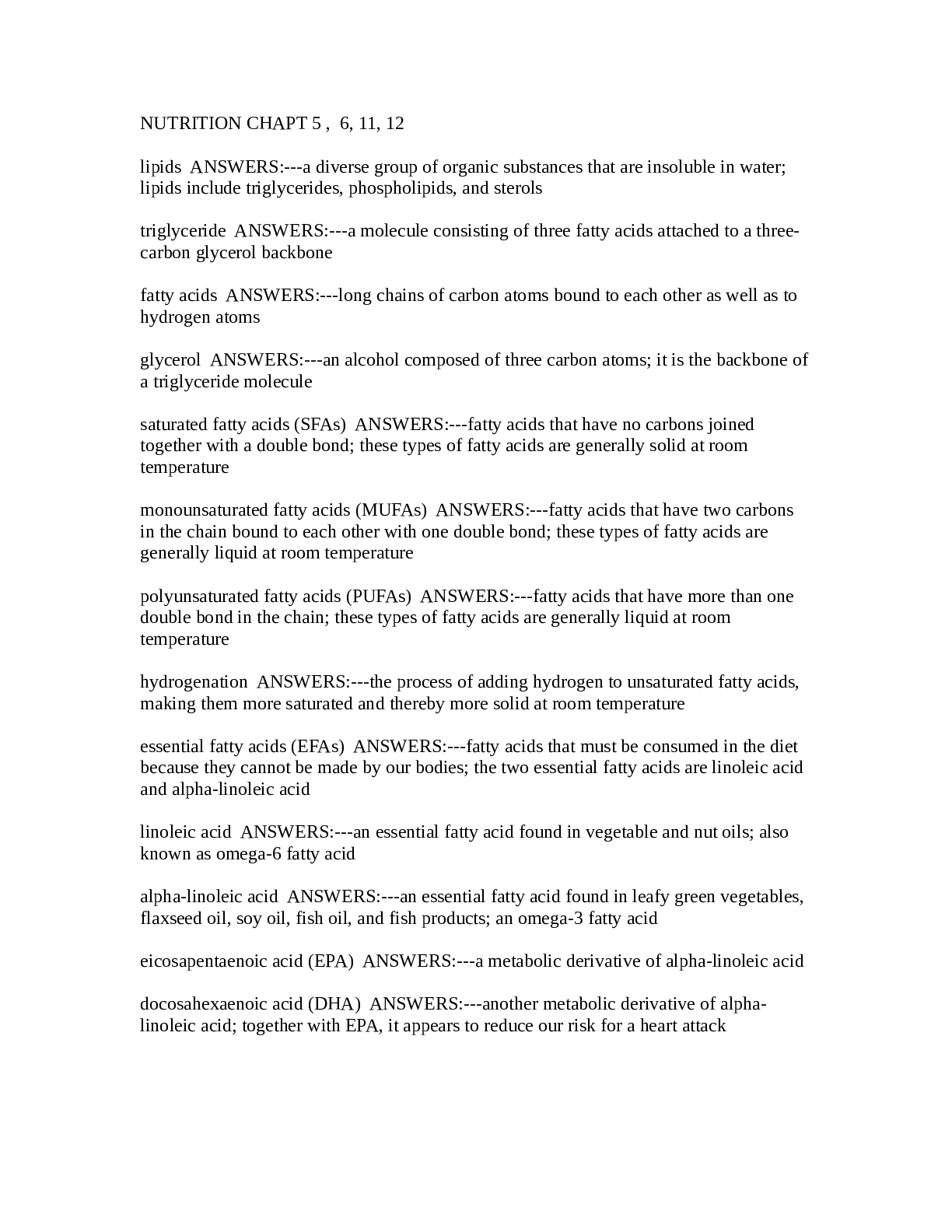
Reviews( 0 )
Document information
Connected school, study & course
About the document
Uploaded On
May 12, 2022
Number of pages
171
Written in
Additional information
This document has been written for:
Uploaded
May 12, 2022
Downloads
0
Views
36





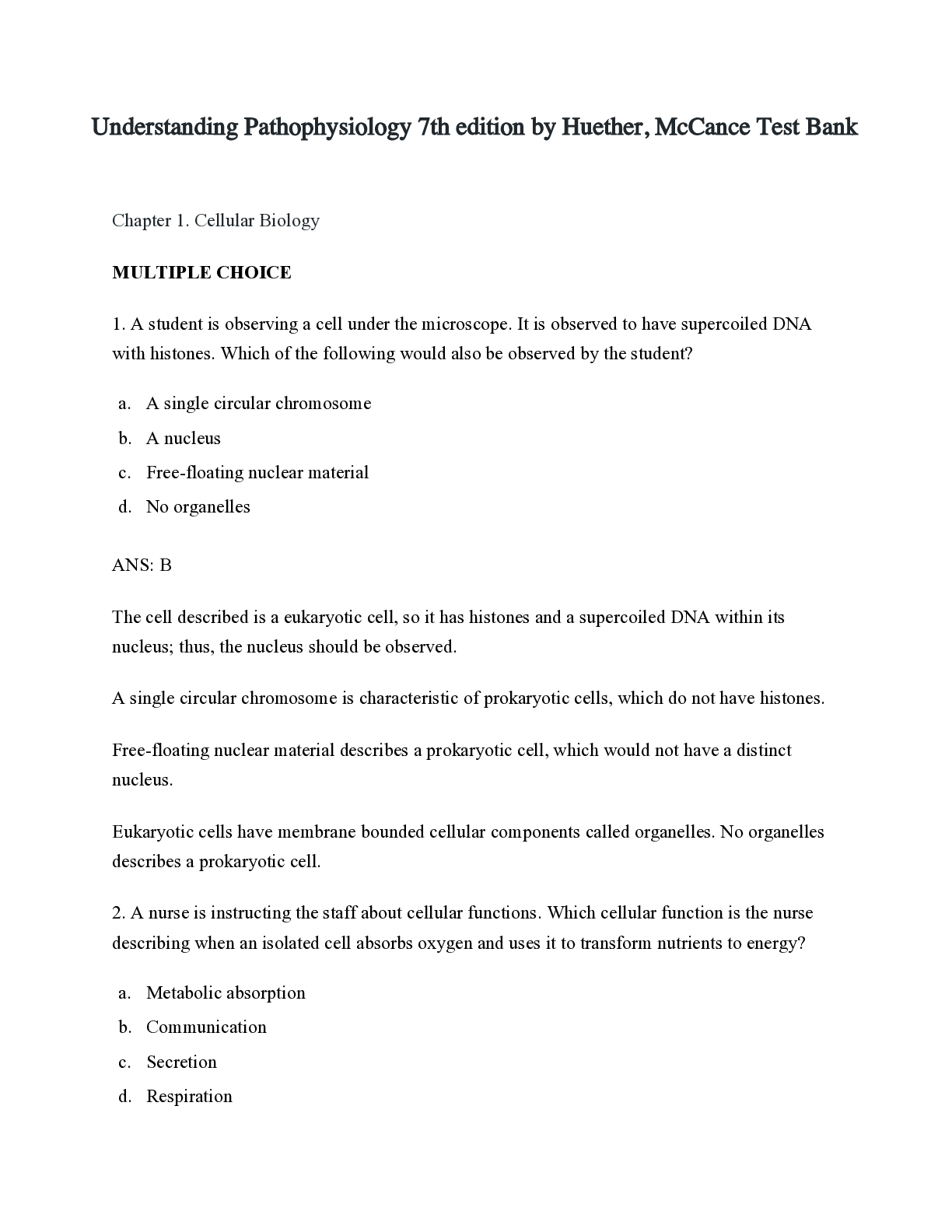
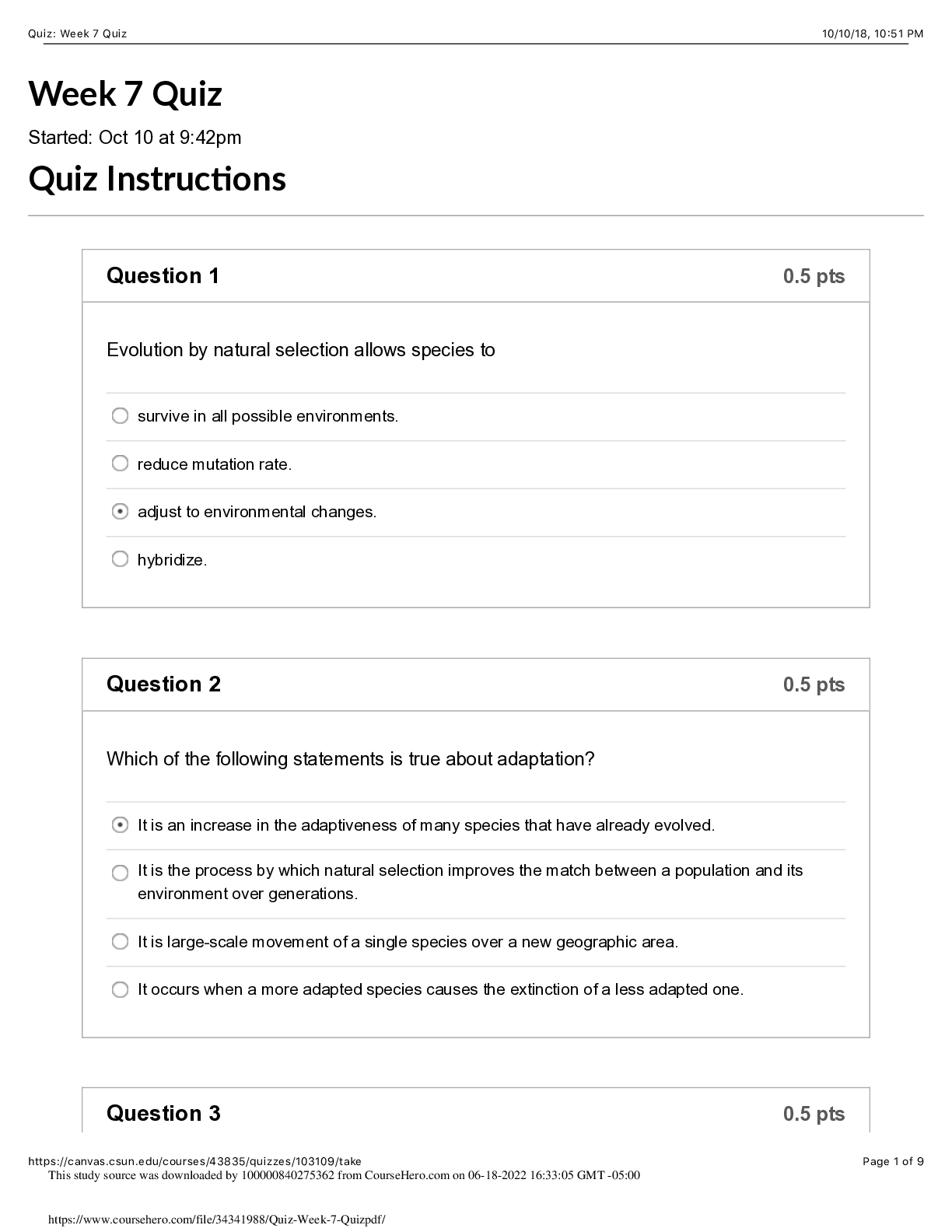
.png)
